Rainwater harvesting is a traditional homesteading life hack that’s gained new popularity among the eco-friendly and budget-conscious. Capturing rainwater is an excellent way to cut back on water consumption and save some hard-earned dollars.
In this article, we’ll discover alternatives to purchasing an expensive rainwater harvesting system and outline DIY rainwater collection solutions.
Let’s dig in!
1. Upcycle a Garbage Can
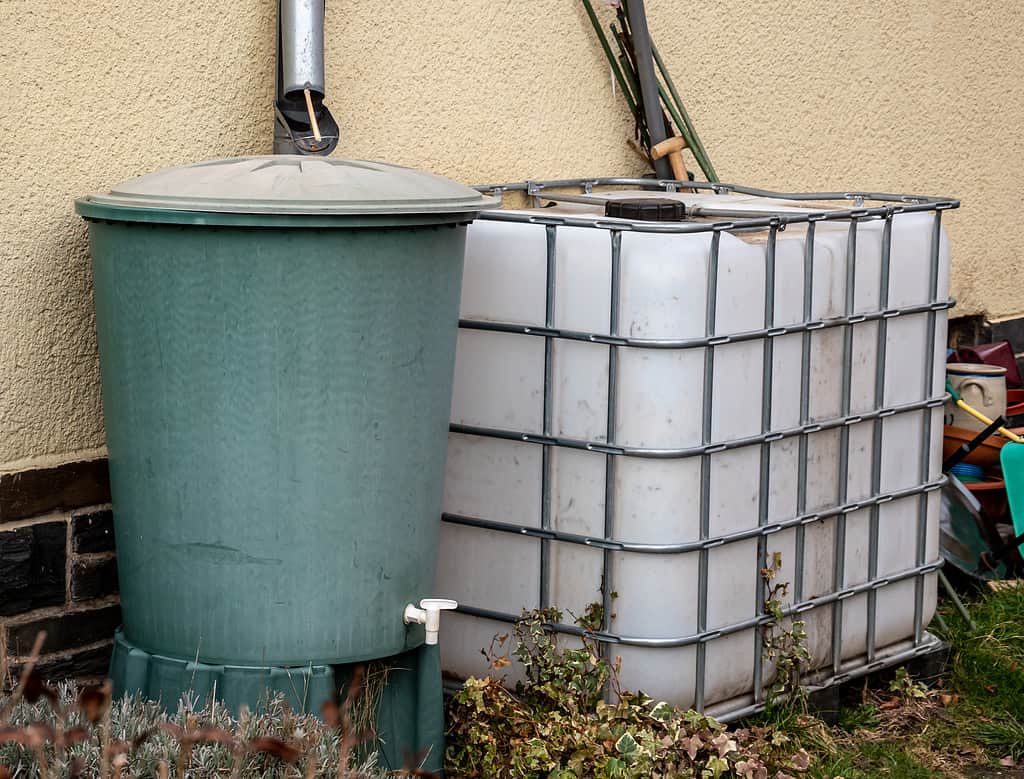
Repurpose a clean garbage can to catch rainwater.
©Animaflora/iStock via Getty Images
The easiest and most affordable way to create a DIY rainwater collection system is to upcycle a clean garbage can.
Get a large, plastic garbage can with a cover, some window screen, and a spigot. Carefully use a knife to put the spigot at the bottom of the garbage can and seal it with window caulking.
Cover the open top with screening to keep out bugs, and place your barrel under your runoff spout. You can also cut a hole for your spout in the top of the cover and put it back on to help secure the screen.
2. Repurpose a PVC Barrel
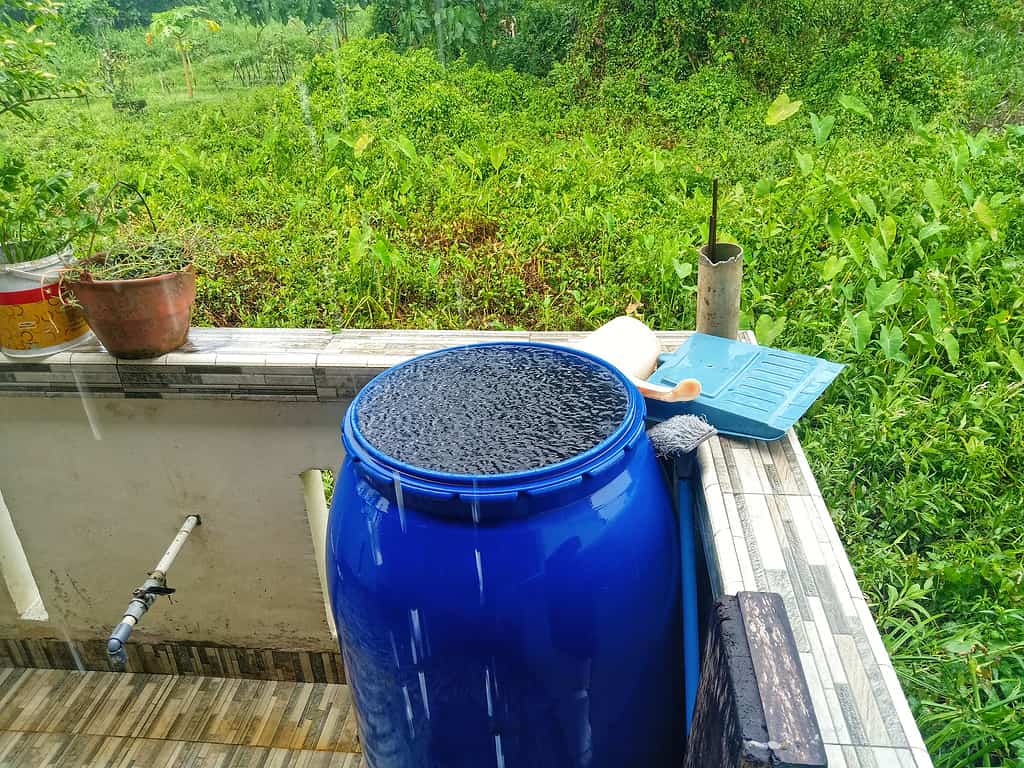
Blue plastic drums are a classic DIY rainwater collection option.
©Ivan Pranata/iStock via Getty Images
If you have a clean PVC barrel or plastic drum, you can repurpose it for an easy DIY rainwater collection apparatus.
Add a screen to the top and a spigot to the bottom. Be cautious when choosing a barrel; never upcycle a barrel that previously had a harmful chemical stored in it.
3. Use a Galvanized Stock Tank
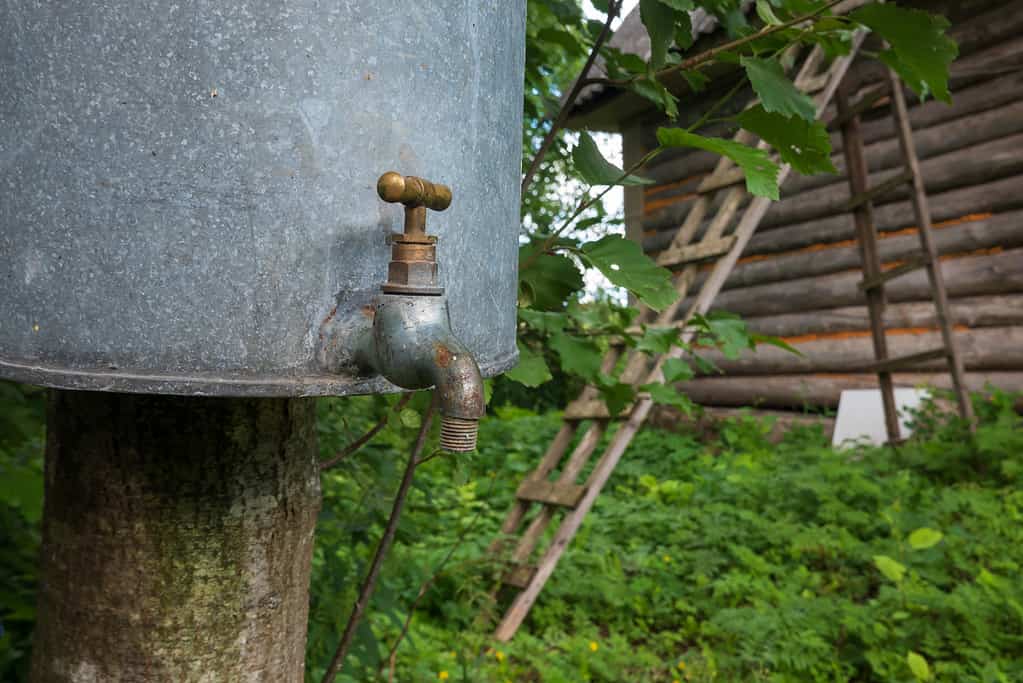
Galvanized stock tanks add rustic charm.
©AnatolEr/iStock via Getty Images
For an effective DIY rainwater collection option that adds a rustic charm to your yard, use a galvanized stock tank.
Look for a stock tank with a drain to simplify your experience. Add a screen over the top to keep out bugs, or invest in a tank cover.
While galvanized steel will last years without rusting, there are a few things you can do to extend its lifespan. First, using a waterproof sealant will add an extra layer of protection to the metal. Second, draining and storing your tank upside down during the off-season will help it dry completely.
4. Use a Tarp and Bucket
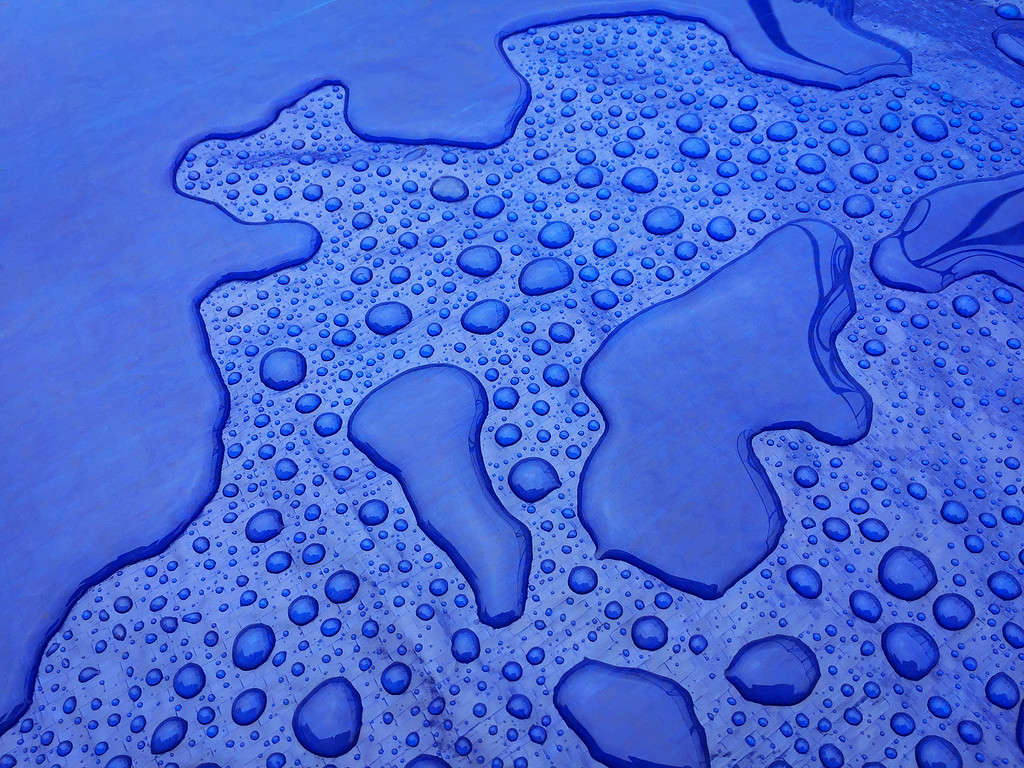
Create a temporary rainwater collector with a tarp and bucket.
©Whitepointer/iStock via Getty Images
If you don’t have a gutter system or want something more temporary, you can use a tarp and bucket. This ultimate DIY rainwater collection system is perfect for camping and seasonal retreats.
Use poles and twine to set up your tarp like a giant funnel over a large bucket. If you have limited materials, you can also tie the tarp up on a slant and weight or tie the bottom to direct the water where you want it to go.
5. Upcycle a Wine or Whiskey Barrel
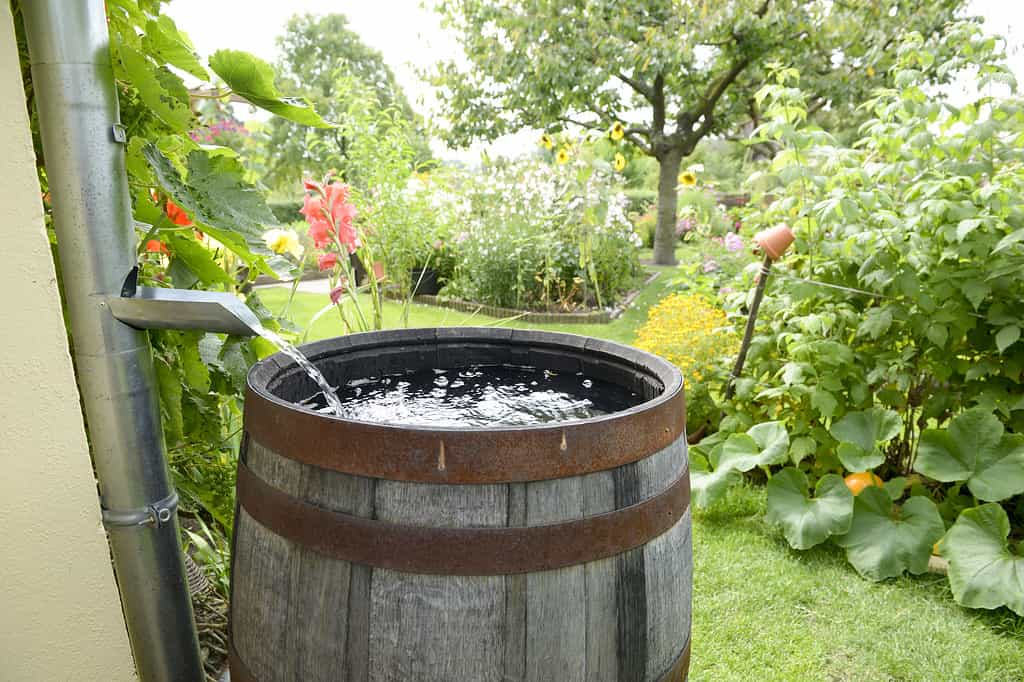
Upcycle a wine or whiskey barrel to collect rain.
©schulzie/iStock via Getty Images
Another fantastic way to add an aesthetic yet functional rainwater harvesting system to your yard is to upcycle a wine or whiskey barrel.
Check with local vineyards or distilleries to see if they have any retired barrels they’re willing to part with. The benefit of this approach is that the barrel will already have drainage built in!
Considerations When Collecting Rainwater
Whether you opt for a DIY approach or invest in a pre-made rainwater collection tank, there are a few key considerations to keep in mind:
1. Local regulations
While it’s not illegal to harvest rainwater in the United States, some areas have restrictions.
For example, some parts of Arkansas restrict rainwater collection due to ecological concerns for local streams and farm use. In Wisconsin, rain barrels are allowed, but only for non-potable use.
Check your area’s local regulations and ensure your rainwater harvesting efforts comply—your efforts to be more eco-friendly are for nothing if they’re harming the local environment.
2. Filtration
Filtration is a must when harvesting rainwater. Adding a window screen will keep mosquitos out. Mosquitos love standing water for laying eggs, compromising your water and increasing the population in your area.
3. Drainage
Make it as easy as possible to drain water from your collection system. Keep in mind that when full, your DIY solution may be impossible to lift up and dump out.
Add a spigot for easy drainage and to simplify connecting a hose. Consider placing your collection system on a small stand to let gravity do the hard work for you.
4. Storage
Rainwater collectors will freeze in the winter, which could damage your system. It’s best to drain it and put it away for the winter if you live in an area that drops below freezing.
Consider where you’ll store your system so it’s maintained but easy to access next spring.
5. Safety
You should never drink the rainwater you collect. These DIY systems lack the proper filtration and treatment to make the water potable and safe.
Use this water for things like tending to your gardens during drought periods or refilling your pool.
| Ranking | DIY Rainwater Collection Solutions |
|---|---|
| 1 | Upcycle a Garbage Can |
| 2 | Repurpose a PVC Barrel |
| 3 | Use a Galvanized Stock Tank |
| 4 | Use a Tarp and Bucket |
| 5 | Use a Wine or Whiskey Barrel |
The photo featured at the top of this post is © Detry26/iStock via Getty Images
Thank you for reading! Have some feedback for us? Contact the AZ Animals editorial team.







